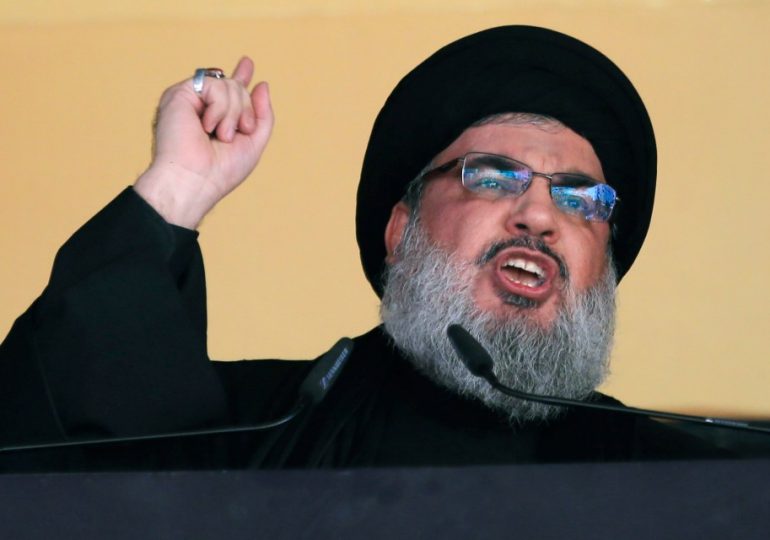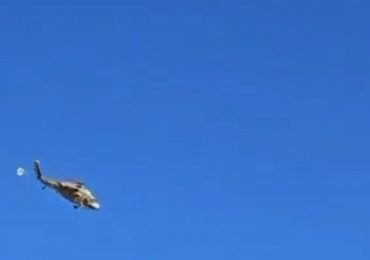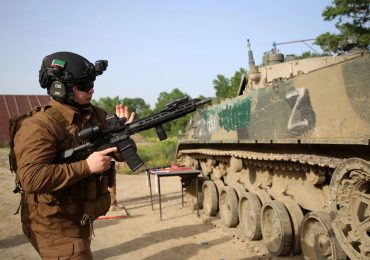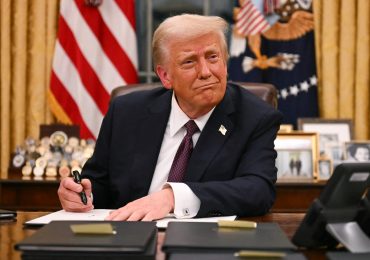THE fate of Hezbollah’s leader is still unknown after Israel launched a missile barrage targeting Hassan Nasrallah on Friday.
Israel announced their deadly strikes had ripped through the 64-year-old terror chief’s underground command post in Beirut but neither side has confirmed his death or survival yet.
APMystery surrounds Hezbollah leader Hassan Nasrallah after he was targeted in an Israeli airstrike on Friday[/caption]
APSeveral explosions ripped through Beirut in two successive airstrikes[/caption]
AFPCivilians left searching the rubble hours after the blitz[/caption]
The Israeli Defense Forces (IDF) declined to comment on if their fighter jet blitz had successfully eliminated Nasrallah.
But they did claim to have killed several Hezbollah officials including Muhammad Ali Ismail, the commander of Hezbollah’s missile unit in southern Lebanon.
His deputy and “other senior officials” were also taken out.
Some reports claim Nasrallah is still alive, with sources saying he was hidden inside a 50ft underground bunker at the time of the strike.
No official statement has been released by Hezbollah about the bearded firebrand leader yet – leading many to speculate on his health.
Nasrallah is often tasked with addressing his terrorist fighters after serious Israeli attacks on TV.
His last national appearance followed the deadly pager and walkie-talkie blasts earlier this month.
Sources believe if he is still alive then another message to his followers will be imminent to squash fears of the terror regime losing its leader.
If Nasrallah is dead then it will mark a pivotal night for Israel with the chief being the biggest name on their kill list so far.
Nasrallah led Iran-backed Hezbollah during the last war with Israel in 2006 and has been a thorn in his enemies side ever since.
He oversaw a massive Iran-backed programme of rebuilding the group’s military machine to become the most heavily armed terror group on Earth.
Just days ago he pledged to carry on fighting Israel armed with a terrifying arsenal of 150,000 missiles and drones.
IDF military spokesperson Daniel Hagari said on Friday that a “precise strike” hit Hezbollah’s “central headquarters” located underneath residential buildings in Dahiyeh.
Images of the Lebanese suburb shows a series of huge explosions with large mushroom clouds erupting into the sky last night.
A source close to Hezbollah said the wave of strikes took out six buildings – including apartment blocks.
Thousands were forced to flee their homes as the rockets closed in.
Six people were killed along with another 91 wounded, according to preliminary data from Lebanon’s health ministry.
A second round of Israeli strikes hit the same area of Beirut later in the night.
ReutersGiant clouds of smoke and flames seen rising from Beirut’s southern suburb of Dahiyeh last night[/caption]
AFPAn apartment block was left up in smoke on Friday[/caption]
APA mushroom cloud lit up the night sky on Friday[/caption]
Pictures show smoking buildings early this morning following the successive blitzes.
Hezbollah has already retaliated after they fired rockets on the Israeli city of Safed – but there are no reports of casualties.
Iran’s supreme leader, Ayatollah Khamenei, is set to hold an emergency meeting of the Supreme National Security Council to respond to the Israeli attacks.
Narallah’s backers in Iran‘s embassy in Beirut said the latest massive strike on the Lebanese capital was a “dangerous, game-changing escalation”.
The embassy added the strike was a “war crime” which merits “appropriate punishment”.
The strike comes after days of Israeli bombardment inside Lebanon as it seems poised to invade the country.
Israel has wiped out a number of top Hezbollah commanders in airstrikes, but Nasrallah remained outside of Israel’s grasp.
Over the past 11 months, Israel has eliminated nearly all of the terror group’s leadership.
Last Friday was one of the most successful days of Israel’s ploy to take out the terror group with them hitting two kingpins and 14 commanders in strikes.
Destruction of Hezbollah’s HQ comes a day after a ceasefire plan appeared to fall through.
Western nations called for a 21-day ceasefire to end the 11-month conflict between Israel and the terror group to its north.
A statement said: “The situation between Lebanon and Israel since October 8th, 2023 is intolerable and presents an unacceptable risk of a broader regional escalation.
“This is in nobody’s interest, neither of the people of Israel nor of the people of Lebanon.
“It is time to conclude a diplomatic settlement that enables civilians on both sides of the border to return to their homes in safety.
“Diplomacy however cannot succeed amid an escalation of this conflict.”
Lebanese civilians and rescue workers look on as plumes of black smoke erupt from a residential blockREX
The ceasefire plan also called for a end to fighting between Israel and Hamas.
But Israel on Thursday rejected the ceasefire plan saying they will fight the paramilitary group “until victory”.
It comes as Israel continues to gear up for a huge ground offensive across the border and into Lebanon.
The IDF have been making plans to activate two brigades consisting of up to 10,000 soldiers for “operational missions”.
Tanks and military trucks were also seen being transported towards the border as an escalation drew closer.
IDF Chief of Staff Lt. Gen. Herzi Halevi already announced how his troops were planning to step up their attacks on Wednesday.
He said the barrage of airstrikes in recent days had been a tactical ploy to help the soldiers once they crossed into Lebanon.
Halevi said: “You can hear the planes above, we are attacking all day.
“This is both to prepare the ground for your possible entry and to continue degrading Hezbollah.”
Inside Hezbollah
By Chief Feature Writer, Oliver Harvey
MORTAL enemies Hezbollah and Israel are on the verge of open warfare, risking a deadly wider conflict in the troubled region.
After decades of bloodshed, the powerful and well-armed Islamist militia has tentacles stretching across the globe.
With Iran’s ayatollah as its puppet master, Hezbollah says it has 100,000 fanatical fighters at its call.
Analysts estimate it has as many as 500,000 rockets and missiles trained on Israel.
Military expert Professor Michael Clarke told me: “Hezbollah are a formidable force. They’re very well equipped. They’ve got more tunnels than Hamas had.
“The tunnels in Lebanon are burrowed out of rock, and hard to destroy. They have around half a million projectiles that they can fire at Israel.
“If they chose to fire off great salvos of these things, a thousand or so at a time, three or four times a day, they are likely to overwhelm Israeli air defences.”
Hezbollah first made their name as a terrorist outfit in 1982 when Israel invaded its northern neighbour Lebanon to root out the Palestine Liberation Organization.
In the bloody fighting, Israel occupied the south of the country and Shia Muslim militias took up arms against the invaders.
Seeing an opportunity to extend its influence, Iran provided funding and training to the group which became known as Hezbollah — meaning Party Of God.
Hell-bent on destroying Israel, it was soon wreaking havoc.
In 1983, it launched a suicide bombing of barracks in the Lebanese capital Beirut, housing US and French troops, leaving more than 300 dead.
The same year, another Hezbollah terrorist drove a van packed with explosives into the compound of the US Embassy in Beirut, killing 63.
The terror group — which is also a political party providing education and health care — developed a taste for kidnapping, too.
Then in 2006, a separate full-blown war was triggered by a deadly cross-border raid by Hezbollah.
It was supposed to be a pushover for Israel’s well-trained regular armed forces against a guerilla army.
But as the Israeli tanks rolled into Lebanon they were quickly met with firm resistance.
Hezbollah had tunnelled deep into Lebanon’s craggy hillsides and built well- fortified positions amid its towns and villages.
Rather than the ragtag irregulars the Israelis expected, they faced highly trained and well-armed troops with night-vision goggles and sophisticated communications.
APFamilies were forced out of their homes after being displaced by the airstrikes[/caption]
Leave a comment








